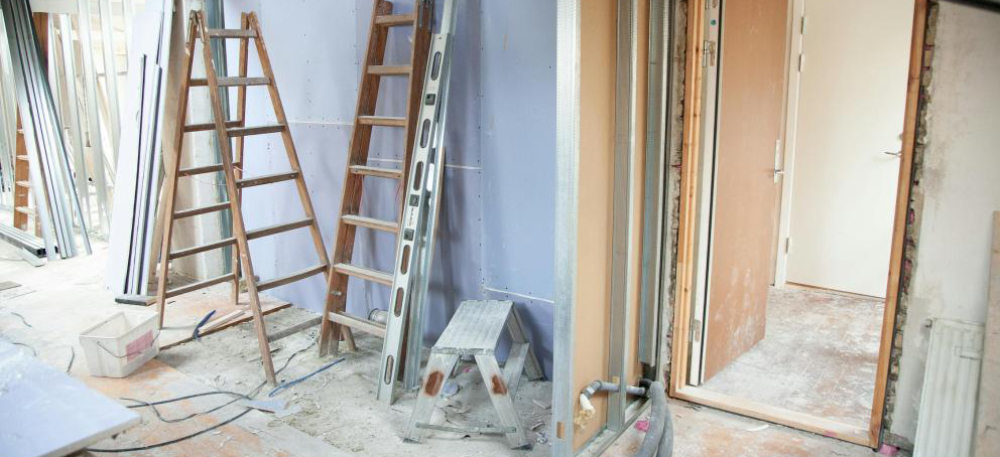Innovative Silica Safety Toolkit Receives Funding Boost in Memory of Construction Visionary
A potentially lifesaving toolkit addressing one of the construction industry’s biggest threats is set to come to fruition thanks to a cash windfall in memory of a sector visionary..
Dr Scott McGibbon is developing a resident, construction client and professional silica toolkit- a targeted toolkit and playbook for anyone working on construction projects either commercially or at home to be aware of the danger silica dust poses.
A natural substance found in various construction materials like sandstone, asphalt, brick, cement and concrete; silica is the second biggest risk to construction workers after asbestos. Prolonged exposure to respirable crystalline silica (RCS) risks serious health issues, resulting in a range of debilitating diseases and injuries.
Dr McGibbon, a former stonemason who now leads his own construction consultancy firm, feels passionately about raising awareness of the life-threatening substance after experiencing first-hand the devastating impact silicosis can have. He became the first recipient of the Paul Dockerill Award, an initiative set up by the Chartered Institute of Building (CIOB) in memory of one of the professional body’s former trustees, who sadly died in 2022.
Dr McGibbon said:
“Despite the risks of silica dust being known for thousands of years, the impact of high exposure is irreversible, and mitigation can be achieved easily. Recent research by the Institution of Occupational Safety and Health revealed around 48,000 deaths are caused by exposure to silica dust at work worldwide, every year and leave many more fighting for breath."
“I am driven by my own experience of being a former stonemason who had to deal with Respirable Crystalline Silica (RCS) daily. I have dealt personally with close work colleagues who contracted silicosis, Chronic Obstructive Pulmonary Disease (COPD) and in some instances death. I have witnessed the devastating impacts of RCS - both on the individual and their families – which has been the key personal driver behind the project. I am grateful to the CIOB for setting up the Paul Dockerill Award to support projects like mine and I am delighted to be its first recipient. The funding will go a long way in helping the project take flight.”
The toolkit, expected to launch in 2026, will consist of several digital and printable resources designed to inform construction professionals, clients and residents about best practices, enhancing the safety of any construction projects they undertake by providing expert guidance. The idea has been welcomed Bradley Price, Director of Policy & Public Affairs at Action for Pulmonary Fibrosis, who added: “Too many lives are devastated by silicosis despite being a preventable condition. Many of those who work with silica dust are not aware of the dangers it can pose, and Action for Pulmonary Fibrosis welcomes this important initiative to inform and educate. We are here for everyone affected by pulmonary fibrosis.”
The CIOB’s Paul Dockerill Award celebrates its namesake and pledges up to £10,000 to projects fuelled by innovation, skills development, fire safety, and resident engagement.
Paul, a CIOB Trustee, was a dedicated professional in the construction and built environment industry, and the award reflects his passion for innovation in building safety through mentoring, skills development, and, most importantly, the improvement of fire safety and resident engagement in the UK.
This article appears on the CIOB news and blog site as "Innovative Silica Safety Toolkit Receives Funding Boost in Memory of Construction Visionary" dated 29 October, 2024.
--CIOB
[edit] Related articles on Designing Buildings
- Achieve safety in demolition.
- Asbestos in construction.
- Asbestos cement.
- Asbestos coating.
- Asbestos insulation.
- Asbestos management.
- Asbestos register.
- Asbestos surveyor.
- Building with structural stone.
- Ceiling tiles.
- Choosing stone.
- Construction dust.
- Contaminated land.
- Control of Asbestos Regulations 2012 CAR12.
- Deleterious materials.
- Failure to mention asbestos.
- Fire blanket.
- Five signs you are at risk of asbestos poisoning at work.
- Licensable work with asbestos.
- Masonry.
- Modern Stonemasonry.
- Silica.
- Silicosis.
- Types of stone.
- The risk of asbestos on brownfield sites.
Featured articles and news
Homes England creates largest housing-led site in the North
Successful, 34 hectare land acquisition with the residential allocation now completed.
Scottish apprenticeship training proposals
General support although better accountability and transparency is sought.
The history of building regulations
A story of belated action in response to crisis.
Moisture, fire safety and emerging trends in living walls
How wet is your wall?
Current policy explained and newly published consultation by the UK and Welsh Governments.
British architecture 1919–39. Book review.
Conservation of listed prefabs in Moseley.
Energy industry calls for urgent reform.
Heritage staff wellbeing at work survey.
A five minute introduction.
50th Golden anniversary ECA Edmundson apprentice award
Showcasing the very best electrotechnical and engineering services for half a century.
Welsh government consults on HRBs and reg changes
Seeking feedback on a new regulatory regime and a broad range of issues.
CIOB Client Guide (2nd edition) March 2025
Free download covering statutory dutyholder roles under the Building Safety Act and much more.
Minister quizzed, as responsibility transfers to MHCLG and BSR publishes new building control guidance.
UK environmental regulations reform 2025
Amid wider new approaches to ensure regulators and regulation support growth.
BSRIA Statutory Compliance Inspection Checklist
BG80/2025 now significantly updated to include requirements related to important changes in legislation.

























